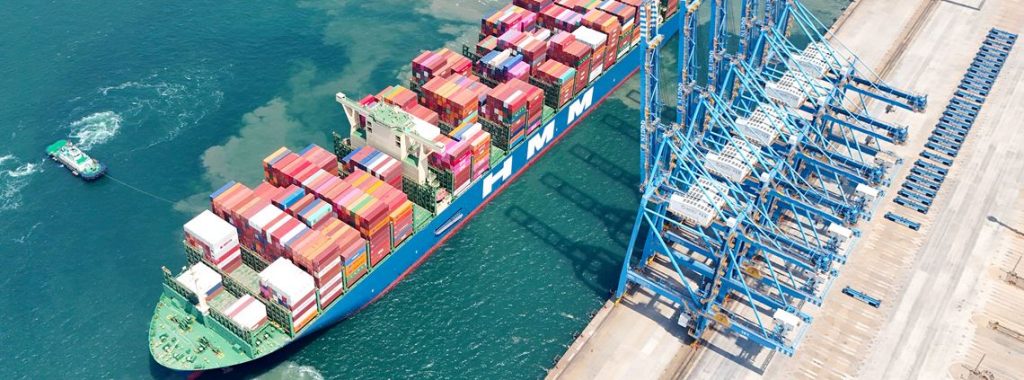Fears soaring excess supply chain capacity could create ‘whiplash effect’

“Depressed” global demand conditions have driven down trade across the globe, and experts have warned the lack of uptake could create “whiplash effect” in the future.
Global excess supply chain capacity has grown as low demand conditions, driven by economic turmoil, have left suppliers without orders and warehouses without stock, according to the GEP Global Supply Chain Volatility Index.
The index fell to -0.50 in July, from -0.26 in June, indicating an “accelerated rise in excess capacity”.
Experts warned this rise in capacity could mean a long-term shift in supply-demand, which could disrupt production rates and have far-reaching consequences on supply chains.
Transport costs are at their lowest level since 2016, it said, while the “sustained destocking of warehouses” means the volume of supply chain capacity going unused reached its highest level since the global financial crisis of 2008-09.
Reports of “safety stockpiles” of goods fell below the long-run average last month, while reports of item scarcity are now in line with historically normal levels, the report revealed.
This is because firms built up resilience over the course of the “disruption supercycles” of pandemic, Brexit, and war in Ukraine, experts said.
The Cranfield School of Management’s deputy director of procurement and supply chain, Farooq Habib, explained that the build-out of supply side redundancies signalled a strategic shift from “just-in-time” supply chains towards more agile models.
He told Supply Management: “Some supply chain segments, such as warehouses, are much easier to relocate away from disruption. Others, like production facilities, may be impossible to move because of the scale of their operations. Logistics segments which are easier to relocate are going to revert back to lean models. However, this is going to put a lot of stress on the supply side of the business, where you have this excess capacity”.
Habib warned this could result in a whiplash effect due to this new supply-demand differential, as companies readjust to the status quo to guarantee resilience.
“Because companies invested in excess capacity to prevent themselves from running dry during disruptions, they are now facing suppliers with ramped-up production. That’s going to cause a build-up of inventory which is going to take a long time to get rid of.”
However, this buildup will be a bigger problem for some sectors than others. Raw materials, metals and plastics, and other products without “sell-by dates” are “much easier to disinvest”.
For perishables, like food and pharmaceuticals, as well as for the fashion industry, this issue is going to be significantly more difficult.
Excess capacity is nonetheless “great news for procurement people,” Habib added, as they will go into negotiations with more “bargaining chips”. With the news of freight prices plummeting, too, now is the time for buyers to renegotiate terms and secure better deals.
GEP Consulting’s vice president, John Piatek, told SM “times will be tough”, adding that procurement has “very little time to act”.
“For procurement leaders, time is of the essence to reset their firms’ cost base before economic conditions worsen. To protect margins, procurement needs to find new ways to slash costs and confront their business partners to take tough choices.”
He advised buying teams to take action that is “bold, decisive, and devoid of emotion”.
“The available capacity and broader stability of today’s supply chain is a fertile ground to plan the supply chain network of the future. Procurement should be already re-considering buy vs build decisions and selecting the partners that will help navigate the next three years instead of the ones that got them through the past three,” he added.
Meanwhile, delivery service Parcelhero’s head of consumer research, David Jinks, told SM that “now is certainly looking like a good time to renegotiate your logistics contracts”.
“Globally there are a huge number of blank sailings – the shipping industry’s euphemism for cancelled container ship voyages – as demand for products and materials falters,” he explained. “Some industries, such as fast-fashion, are in danger of being stuck with products on the shelves as a lacklustre summer moves to a sluggish autumn.”
Jinks warned, however, buyers should avoid a sense of “false security” from these results, because “global supply chains are far more fragile than we once thought”.
He added while some products were in overstock, others might only appear to be because of shortages elsewhere.
“Some of the very latest electric cars on the market are seeing huge delays to deliveries because of ongoing materials shortages and the sheer scale of demand. Indeed, it might be that some materials and components appear to be overstocked because vital components such as particular chips or rare earth metals are still in short supply, causing manufacturing backlogs.”
He advised buyers to “take advantage of the lull” in terms of purchasing transportation costs.
“The next uptick could be round the corner. Or equally the next global supply chain crisis could be lying in wait. Either an economic pick-up or a global supply emergency will reduce stock levels and put up your costs.”
Jinks also suggested buyers stay aware of the “sticky situation” in the Panama Canal over the next year, as the key logistics route is suffering from low water levels.

